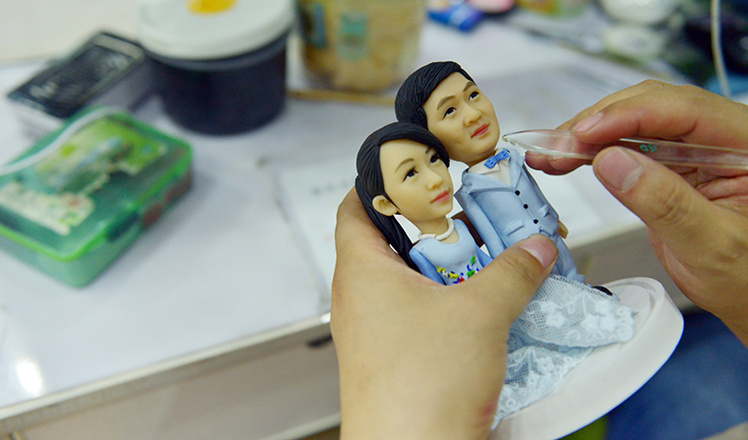Chinese researchers to develop 3D skin printing technology
Updated: 2016-08-04 20:00
(Xinhua)
|
||||||||
CHONGQING -- Chinese researchers and companies are developing the technology and processes to make 3D-printed skin a reality, and they expect to achieve this within two to three years.
Wu Jun, director of the Burns Institute at the Southwest Hospital in Chongqing, said he has been testing the process with pig skin.
"In printing skin, the biggest challenge is the 'ink.' We need to find the right material that can be made into a certain form while not damaging its activity," he said. The ink he refers to is the skin tissue, at the current time, 3D printing in the medical industry mostly produces hard items, the flexibility of skin makes this process more difficult.
"I expect the process to be finalized within two to three years," he said.
"Many other researchers are at the same stage as us, so we are moving fast to be the first to make this breakthrough," he said.
The aim is to make custom-made skin for burns patients that will be printed according to their wounds.
3D printing has been used in many operations, but there are still a few more years to go until we can successfully print live tissue or organs, Wu said.
Some researchers across the globe have printed small tissue samples in a lab environment, but the challenge is to keep it alive, functional and fit for clinical use, he said.
There is a 3D printing factory for medical products under construction in Chongqing, said Yang Chen, manager of Hkable Biological 3D (China) Co. Ltd.
The factory, a joint venture between U.S.-based Hkable and Chinese biotechnology company Jintai in Chongqing, is the first 3D medical printing factory in China.
"We will use 3D printers to make splints and artificial limbs in the beginning, then we will develop more advanced stem cell-printed products," Yang said.
Across China, there have been a number of successes using 3D printing for surgical purposes.
In June, doctors in Peking University Third Hospital replaced five vertebrae with 3D-printed replicas in a cancer patient. The 3D-printed vertebrae measured 19 centimeters, the longest ever in a successful operation.
"3D printing is changing medicine," said Dai Kerong, an academic with the Chinese Academy of Engineering.
"Mass-produced joints do not fit every patient, there is a need for custom-made 3D printed joints," he said.
"This is only the beginning, however, we must make sure 3D medical applications are properly supervised," said Dai.
- New lab will explore South China Sea resources
- 40 telecom fraud suspects returned to China from Kenya
- Cheery promotional video introduces G20 city Hangzhou to Europe
- Researchers claim intelligence services targeted Chinese airline
- Tunnel-bus production center faces delays
- Chinese Valentine's Day Special: Love conquers everything
- Nepal's newly elected PM takes oath
- Texas gun law worries incoming students
- China vows to deepen economic, trade cooperation with ASEAN
- Fire guts Emirates jet after hard landing; 1 firefighter dies
- Egypt's Nobel-laureate scientist dies of illness in US
- THAAD muscle flexing unmasks anxiety over declining hegemony

 Top swimmer Sun Yang makes sweet revenge
Top swimmer Sun Yang makes sweet revenge
 Lin Yue and Chen Aisen win Olympic gold medal
Lin Yue and Chen Aisen win Olympic gold medal
 Artist creates mini-mes for loving couples at Qixi festival
Artist creates mini-mes for loving couples at Qixi festival
 Skyscraper demolished outside ancient city
Skyscraper demolished outside ancient city
 Chinese Valentine: Love conquers everything
Chinese Valentine: Love conquers everything
 Ace swimmers make record-breaking splash in Rio
Ace swimmers make record-breaking splash in Rio
 Chinese weightlifter Long smashes world record
Chinese weightlifter Long smashes world record
 China wins first diving gold of Rio Games
China wins first diving gold of Rio Games
Most Viewed
Editor's Picks

|

|

|

|

|

|
Today's Top News
US launches airstrikes against IS targets in Libya's Sirte
Ministry slams US-Korean THAAD deployment
Two police officers shot at protest in Dallas
Abe's blame game reveals his policies failing to get results
Ending wildlife trafficking must be policy priority in Asia
Effects of supply-side reform take time to be seen
Chinese State Councilor Yang Jiechi to meet Kerry
Chinese stocks surge on back of MSCI rumors
US Weekly

|

|







